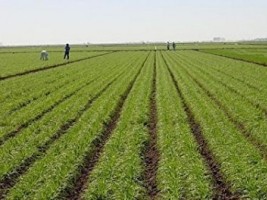|
||||||||||||||||||
|
|
Haiti - Agriculture : Update of the agricultural situation in the country 22/05/2018 09:50:50
Weather situation : Field observations indicate an uneven geographical distribution of the first rains of the season. For example, the department of the Center and the communes of the Department of North have not yet benefited from rains allowing them to launch the spring campaign. This same observation is made in the South and Grand'Anse where only a few communes, having benefited from the first rains, started the sowing operations, while others remain in waiting. Agricultural situation : In almost all agricultural areas of Haiti, land is prepared for the spring 2018 spring season, dominated by maize and beans, and then by Congo pea and sorghum, which are also planted in this period, and sowing operations started with the rains of April. In the North and Northeast, where the residual effects of climate shocks of September are still visible, a lack of seeds delays the start of the spring campaign in addition to the low economic means of farmers. In the Central Plateau, the rainy season usually starts in May, and planting is just starting. In addition, in the Artibonite, rice crops are in progress. According to the Observatory of the CNSA in this department, these harvests are rather weak because of strong winds which affected the rice fields and in spite of the intervention of the public authorities https://www.haitilibre.com/en/news-23775-haiti-agriculture-support-project-for-rice-producers-of-artibonite.html . Currently, farmers are getting ready to launch the main season. In the south, for the spring, in the irrigated part, about 10 tons of rice seeds have been distributed in support of production, according to the Departmental Directorate for Agriculture South (DDAS). Producers currently benefit from corn seed support that was originally intended for the winter season but could not be used at that time. Food availability : Stocks from winter crops, especially beans, are about to be exhausted. Current rice harvests are beginning to supply the markets, but they can not fill the supply gap in the face of market demand. Globally, markets are still very well supplied, with the predominance of imported food products. Some local products are still available: banana, roots and tubers, real trees and mangos. Farm labor : To date, the dominant activity likely to generate jobs for the poorest is soil preparation and sowing until the end of May. It will be followed by weeding activities and picking or harvesting from June. In areas with little or no impact from last year's shocks and last season's (winter) harvests, the demand for agricultural workers has increased : South, Southeast, Grande-Anse and Artibonite. But supply is insufficient because of urban migration or to the Dominican Republic and the use of other income-generating activities such as motorcycle taxi or small business. In other areas such as the Northeast, North, Northwest or Nippes, farmers have been unable to hire workers due to lack of economic means. However, their land could be plowed using unpaid family labor. Prospect : As the development of the situation largely reflects the assumptions made in the outlook for February to September 2018, the same assumptions can be maintained. The partial decrease in the food supply could keep the prices of some local products (maize, black pea) up, until the next harvests in June. For prices of imported products, including rice, exchange rate depreciation and fuel price adjustment are factors that could influence an increase during the outlook period. The Northeast and Haut-Plateau regions remain in crisis (IPC Phase 3) until the spring season crops and are expected to recover from a stress situation (IPC Phase 2) between June and September . The rest of the country is in a minimum or stress situation (CPI Phases 1 and 2) and should stay there. See also : https://www.haitilibre.com/en/news-23775-haiti-agriculture-support-project-for-rice-producers-of-artibonite.html HL/ HaitiLibre
|
|
|
Why HaitiLibre ? |
Contact us |
Français
Copyright © 2010 - 2024 Haitilibre.com |



